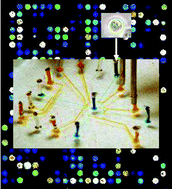Abstract
To correlate gene expression profiles to fundamental biological processes such as cell growth, differentiation and migration, it is essential to work at the single cell level. Gene expression analysis always starts with the relatively low efficient reverse transcription (RT) of RNA into complementary DNA (cDNA), an essential step as unprocessed RNAs will not be analysed further. In this paper, we present a novel method for RT that uses microfluidics to manipulate nanolitre volumes. We compare our method to conventional protocols performed in microlitre volumes. More specifically, reverse transcription was performed either in a polydimethylsiloxane (PDMS) rotary mixer or in a tube, using a single cell amount of mouse brain RNA (10 pg), and was followed by a template-switching PCR (TS-PCR) amplification step. We demonstrate that, using the microfluidic protocol, 74% of the genes expressed in mouse brain were detected, while only 4% were found with the conventional approach. We next profiled single neuronal progenitors. Using our microfluidic approach, i.e. performing cell capture, lysis and reverse transcription on-chip followed by TS-PCR amplification in tube, a mean of 5000 genes were detected in each neuron, which corresponds to the expected number of genes expressed in a single cell. This demonstrates the outstanding sensitivity of the microfluidic method.


 Please wait while we load your content...
Please wait while we load your content...